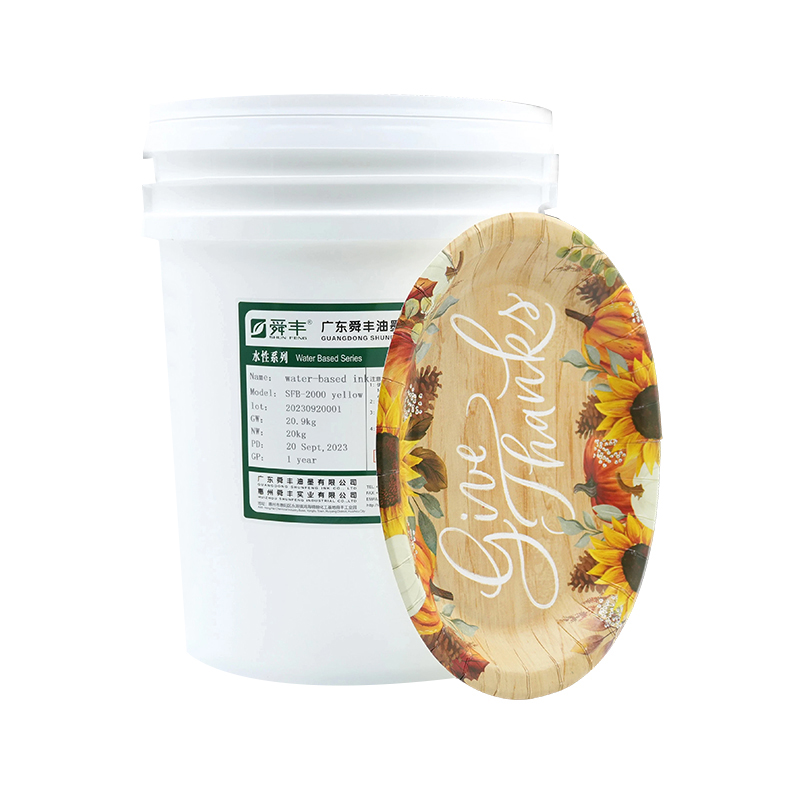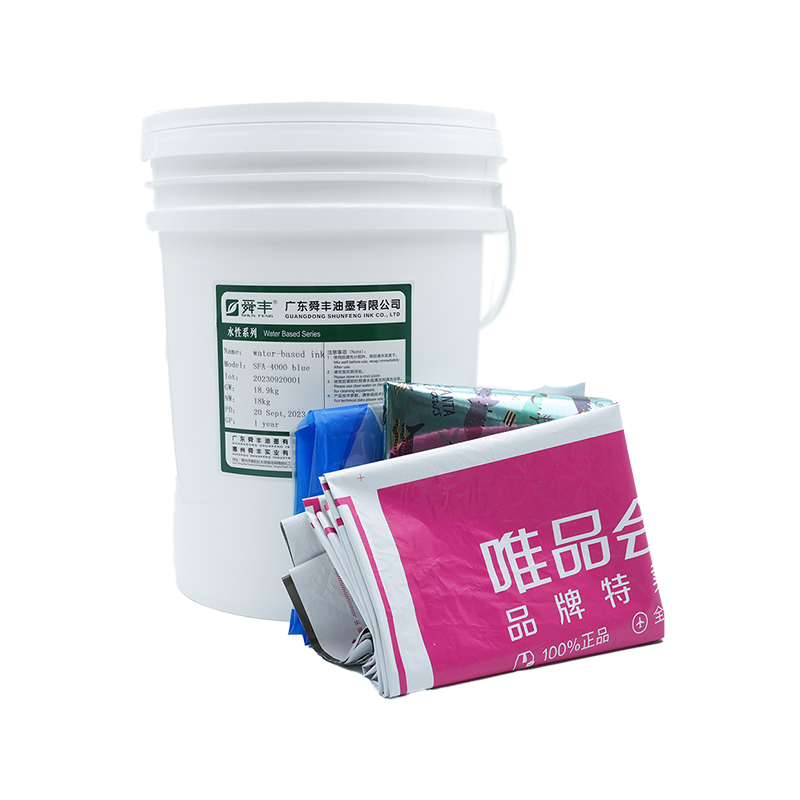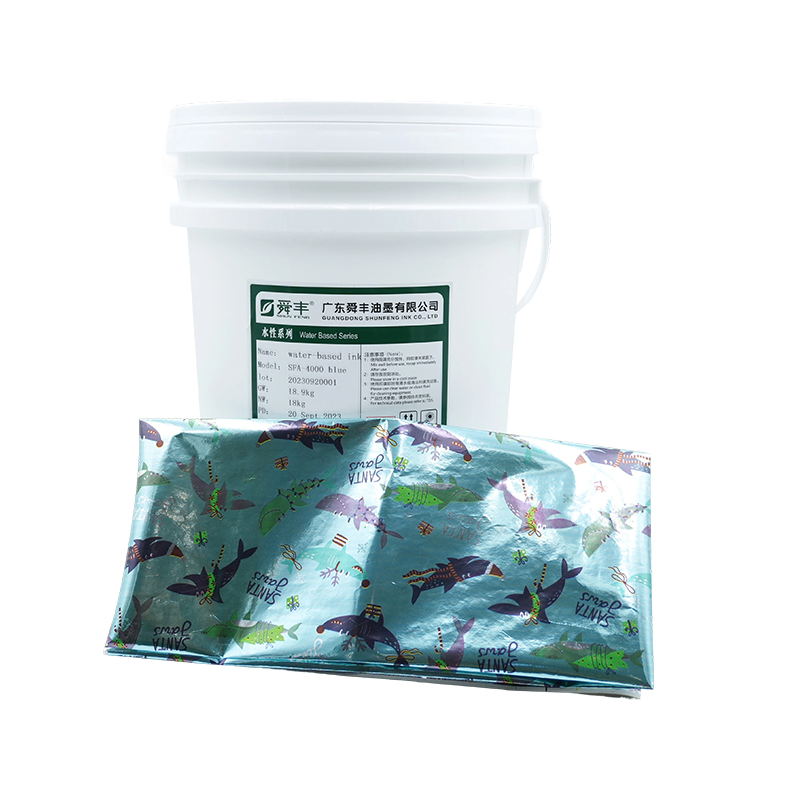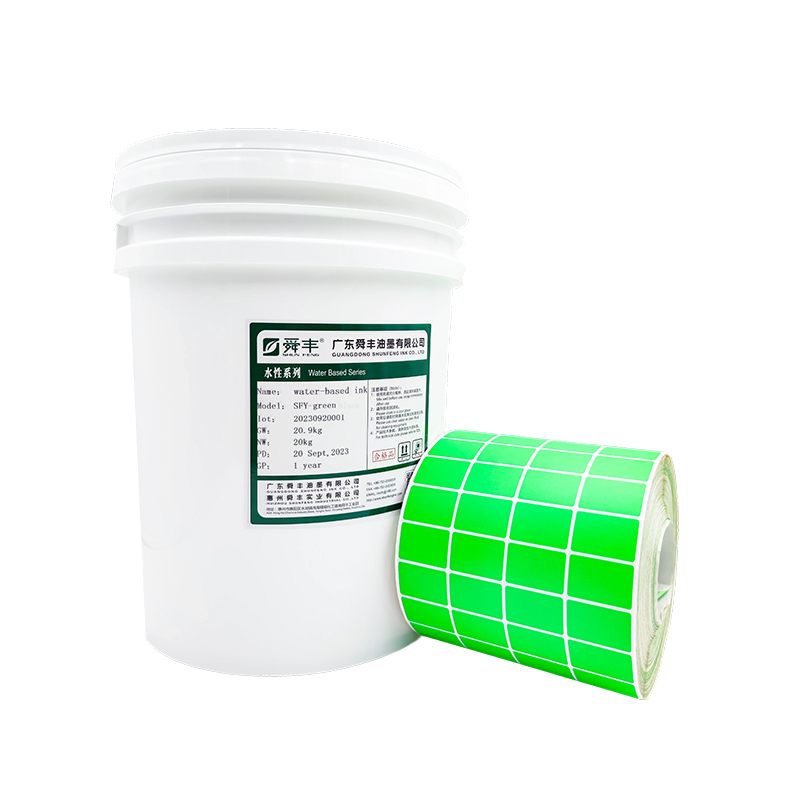How does Flexo UV ink adhere to paper?
Release Time : 2025-08-14
Flexo UV ink's adhesion to paper is a crucial aspect of its application, directly impacting the quality and durability of printed products. Excellent adhesion not only ensures the ink adheres securely to the paper surface but also prevents fading and peeling during subsequent handling. Therefore, understanding the adhesion characteristics of Flexo UV ink and the factors influencing it is crucial for achieving high-quality printing.
First, Flexo UV ink's unique formulation provides excellent adhesion. These inks typically contain specialized resins that cure rapidly under UV light, forming a strong and durable film. This film not only adheres tightly to the paper surface but also exhibits a degree of flexibility, making it less susceptible to cracking or detachment under external forces. These excellent physical properties provide a strong foundation for ink adhesion, ensuring the stability of printed products in various environmental conditions.
Second, the type of paper significantly influences Flexo UV ink's adhesion. Different paper materials have varying surface properties and water absorption, which directly influence the interaction between the ink and paper. For example, coated paper, due to its smooth and dense surface structure, often requires specially formulated inks to ensure good adhesion. Uncoated paper, while having a rougher surface, has a higher fiber density and water absorption that actually enhances ink penetration and retention. Therefore, when selecting Flexo UV ink, it's important to consider the specific paper characteristics and adjust the ink formulation or process parameters accordingly to achieve optimal adhesion.
Furthermore, operational details during the printing process are also crucial factors influencing Flexo UV ink adhesion. Appropriate printing pressure, anilox roller selection, and ink viscosity adjustment all directly impact ink transfer volume and distribution uniformity. Insufficient or excessive printing pressure can result in uneven ink coverage on the paper surface, impacting adhesion. Similarly, the number of lines and engraving angle of the anilox roller determine ink transfer efficiency. A suitable anilox roller ensures ideal ink thickness and uniformity on the paper, thereby improving adhesion. Furthermore, ink viscosity needs to be adjusted based on the specific printing speed and paper type to ensure the ink neither dries too quickly, causing clogging, nor becomes too thin, reducing adhesion.
Notably, the application of UV curing technology significantly improves the adhesion of Flexo UV ink. Traditional inks typically rely on solvent evaporation or oxidative polymerization to dry, a process that can take a long time and is susceptible to factors such as ambient humidity. In contrast, UV inks cure instantly through ultraviolet light, forming a hard and stable film. This rapid curing mechanism not only improves production efficiency but also reduces the impact of external factors on adhesion, ensuring that printed products maintain excellent adhesion even in harsh environments. Furthermore, the low heat generated during the UV curing process prevents paper deformation or ink deterioration caused by high temperatures, further ensuring stable and reliable adhesion.
To further enhance the adhesion of Flexo UV ink on paper, advanced additives have been incorporated into the ink formulation. These additives can improve the ink's rheological properties, enhance its affinity with the paper surface, and even impart specific functional properties such as scratch and abrasion resistance. The appropriate use of these additives can significantly improve ink adhesion without sacrificing other properties, meeting the needs of diverse applications.
Finally, proper post-processing measures are also crucial for ensuring the adhesion of Flexo UV ink. After printing, proper cooling and storage conditions help the ink fully cure and maintain stable adhesion to the paper. Furthermore, for certain printed products intended for specialized applications, such as food packaging or pharmaceutical labels, additional safety and compliance testing is required to ensure the ink does not contaminate the contents or pose health risks. These rigorous post-processing steps not only ensure product safety but also strongly support the ink's long-term adhesion.
In summary, the adhesion of Flexo UV ink to paper is a complex and multifaceted issue, involving the chemical composition of the ink itself, paper properties, the printing process, and post-processing. By carefully selecting ink types, optimizing printing parameters, utilizing advanced UV curing technology, and implementing scientific post-processing measures, ink adhesion can be significantly improved, ensuring superior quality and long-lasting durability of printed products under various conditions. Whether for commercial printers striving for efficient production or packaging manufacturers prioritizing product safety, mastering the relevant knowledge and technical skills of Flexo UV ink adhesion is essential. Only by doing so can they stand out in the fiercely competitive market and provide customers with superior products and services.
First, Flexo UV ink's unique formulation provides excellent adhesion. These inks typically contain specialized resins that cure rapidly under UV light, forming a strong and durable film. This film not only adheres tightly to the paper surface but also exhibits a degree of flexibility, making it less susceptible to cracking or detachment under external forces. These excellent physical properties provide a strong foundation for ink adhesion, ensuring the stability of printed products in various environmental conditions.
Second, the type of paper significantly influences Flexo UV ink's adhesion. Different paper materials have varying surface properties and water absorption, which directly influence the interaction between the ink and paper. For example, coated paper, due to its smooth and dense surface structure, often requires specially formulated inks to ensure good adhesion. Uncoated paper, while having a rougher surface, has a higher fiber density and water absorption that actually enhances ink penetration and retention. Therefore, when selecting Flexo UV ink, it's important to consider the specific paper characteristics and adjust the ink formulation or process parameters accordingly to achieve optimal adhesion.
Furthermore, operational details during the printing process are also crucial factors influencing Flexo UV ink adhesion. Appropriate printing pressure, anilox roller selection, and ink viscosity adjustment all directly impact ink transfer volume and distribution uniformity. Insufficient or excessive printing pressure can result in uneven ink coverage on the paper surface, impacting adhesion. Similarly, the number of lines and engraving angle of the anilox roller determine ink transfer efficiency. A suitable anilox roller ensures ideal ink thickness and uniformity on the paper, thereby improving adhesion. Furthermore, ink viscosity needs to be adjusted based on the specific printing speed and paper type to ensure the ink neither dries too quickly, causing clogging, nor becomes too thin, reducing adhesion.
Notably, the application of UV curing technology significantly improves the adhesion of Flexo UV ink. Traditional inks typically rely on solvent evaporation or oxidative polymerization to dry, a process that can take a long time and is susceptible to factors such as ambient humidity. In contrast, UV inks cure instantly through ultraviolet light, forming a hard and stable film. This rapid curing mechanism not only improves production efficiency but also reduces the impact of external factors on adhesion, ensuring that printed products maintain excellent adhesion even in harsh environments. Furthermore, the low heat generated during the UV curing process prevents paper deformation or ink deterioration caused by high temperatures, further ensuring stable and reliable adhesion.
To further enhance the adhesion of Flexo UV ink on paper, advanced additives have been incorporated into the ink formulation. These additives can improve the ink's rheological properties, enhance its affinity with the paper surface, and even impart specific functional properties such as scratch and abrasion resistance. The appropriate use of these additives can significantly improve ink adhesion without sacrificing other properties, meeting the needs of diverse applications.
Finally, proper post-processing measures are also crucial for ensuring the adhesion of Flexo UV ink. After printing, proper cooling and storage conditions help the ink fully cure and maintain stable adhesion to the paper. Furthermore, for certain printed products intended for specialized applications, such as food packaging or pharmaceutical labels, additional safety and compliance testing is required to ensure the ink does not contaminate the contents or pose health risks. These rigorous post-processing steps not only ensure product safety but also strongly support the ink's long-term adhesion.
In summary, the adhesion of Flexo UV ink to paper is a complex and multifaceted issue, involving the chemical composition of the ink itself, paper properties, the printing process, and post-processing. By carefully selecting ink types, optimizing printing parameters, utilizing advanced UV curing technology, and implementing scientific post-processing measures, ink adhesion can be significantly improved, ensuring superior quality and long-lasting durability of printed products under various conditions. Whether for commercial printers striving for efficient production or packaging manufacturers prioritizing product safety, mastering the relevant knowledge and technical skills of Flexo UV ink adhesion is essential. Only by doing so can they stand out in the fiercely competitive market and provide customers with superior products and services.







